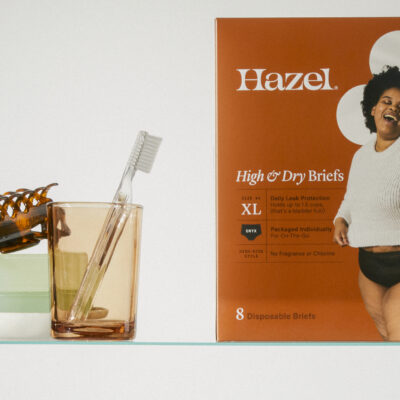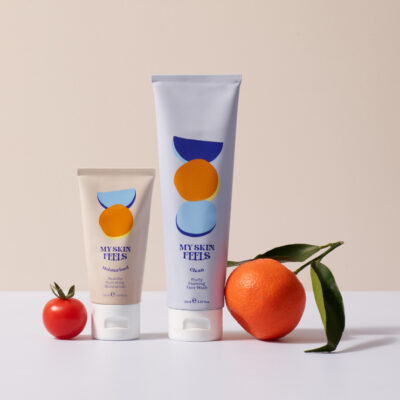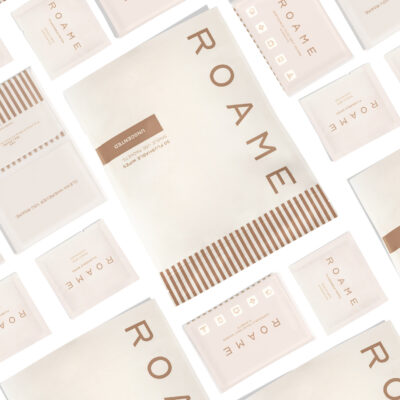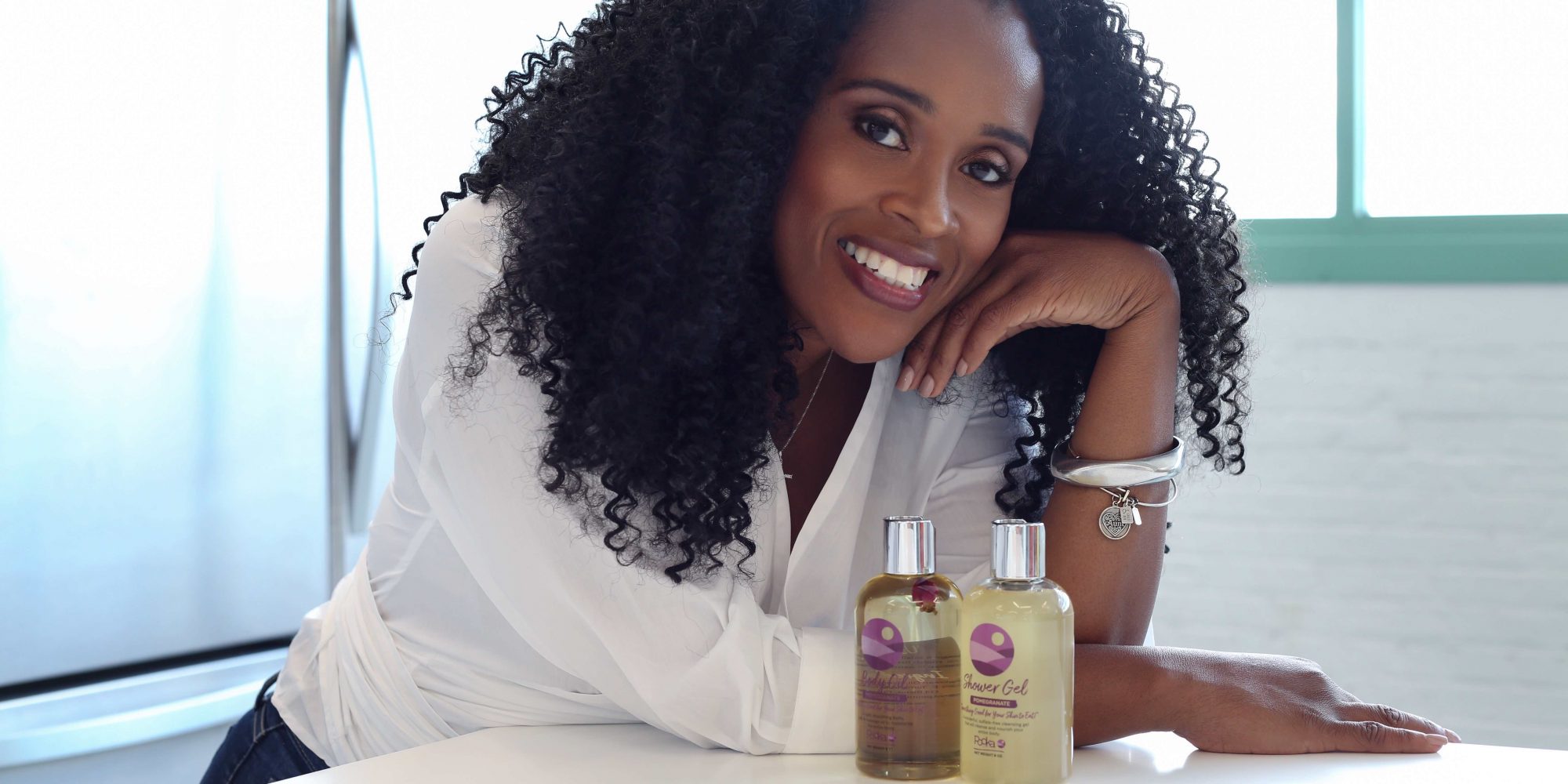
“It Takes Time”: Pooka Pure & Simple Founder Dawn Fitch’s Long Road To Profits, Press Coverage And Proper Distribution
For a long time, Dawn Fitch didn’t feel well. She struggled with fatigue, vertigo and numbness, and doctors didn’t know what was wrong. They diagnosed her with everything from fibromyalgia to hyperglycemia, but nothing hit the mark. Taking her health into her own hands, she began making bath and body care products from natural ingredients, which led to creation of her brand Pooka Pure & Simple, and turning to wellness practices such as meditation and acupuncture. Her lifestyle changes helped. However, they were no cure. During a particularly bad stretch, she rushed to the emergency room, where she encountered a doctor who asked her what she thought the issue was. Based on personal research, she answered either multiple sclerosis or diabetes. Test results showed Fitch was right: She had MS.
While knowing what she was up against was somewhat of a relief, Fitch was forced to confront the disease and still lead her brand. “The great thing about entrepreneurship is that you can take time if you need it. I don’t know how I would have dealt with it if I had to go a corporate job,” she says. Although Fitch isn’t always free of symptoms today, she illustrates the power of action in the face of problems, and her experience informs her business. “I want to teach people how to be a little healthier, and I want to make it not so scary, not so overwhelming,” she says in a brand video. “Little baby steps are how I changed my health. It wasn’t because I was some big health guru. It was because I got sick.” Beauty Independent talked to Fitch about being cognizant of her body’s limits, building a digital community, winning at wholesale, losing at retail, hiring employees carefully and staying off of Amazon.
What were you doing before Pooka?
I am a graphic artist by trade. My longest job was in the music industry for Sony Music, and it was a lot of fun. I was working in Manhattan and, while I was doing that, I started getting sick. I was very tired. I went to lots of doctors, and they kept sending telling me I was the healthiest woman on the planet, but I didn’t feel good. I had to change some things in my life. I changed my diet, and took out white flour and sugar. At the time, I read a great article about your skin being your largest organ and how what goes on your skin goes into your system. I was a body care junkie, and I started to turn over my bottles and saw I couldn’t pronounce the ingredients on them. I started making products on my stove from ingredients I could eat. Because I was a graphic artist, I put labels on them.
My mom called us pookalitas. I have no reason why. We still ask her what are pookalitas. It doesn’t have any origin. The word was too long, so I cut it in half to come up with Pooka. My friend said, “Why don’t you take your products to a festival and see if you can sell them?” I thought, “Well, I want new shoes. So, maybe, if I sell some, I can buy them.” We sold out, and I couldn’t believe it. That’s how I backed into the industry.
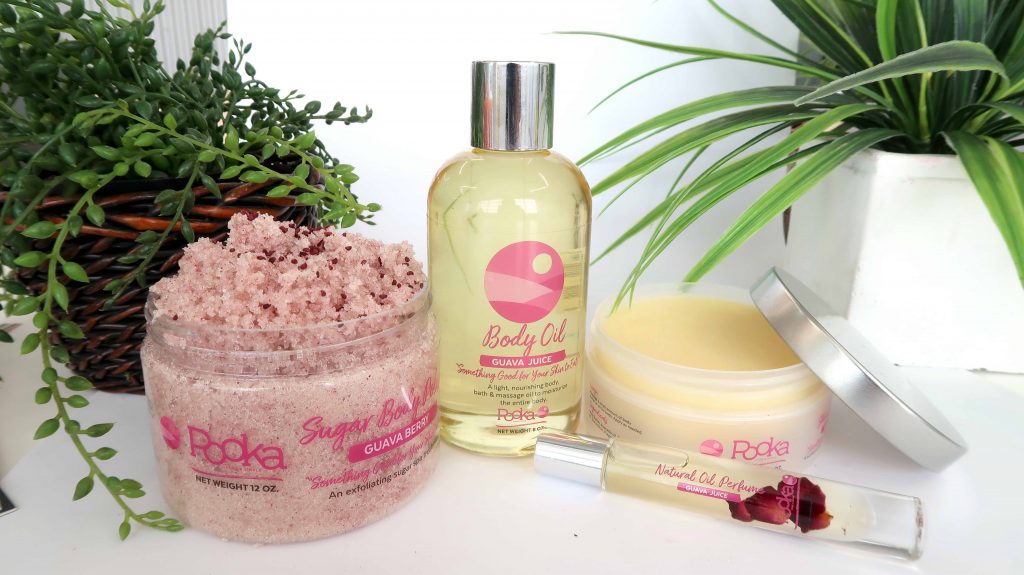
When did the brand officially launch?
2001. We had a very small line. Our biggest thing was something called Elbow Grease. I knew a lot of people were using Vaseline as a moisturizer, and I made a natural version of it with coconut and almond oil. We also had a few body butters. We maybe had four products in a couple of different scents. We were very grassroots. We did a lot of festivals, parties in people’s basements and church events. I didn’t have a plan to start a business, but it took off, so I kept going with it.
How did Pooka get into Whole Foods?
After I worked at Sony Music, they said, “Come back and show us what you are doing.” I didn’t want to go back and show them the oils I was making, but I put my pride to the side and went back. The woman who took my place after I left said, “I have a really great friend who works at Whole Foods.” That’s how I got introduced to Whole Foods in 2005.
You’ve had a lot of impressive press coverage. How did it come about?
At church, they knew I was a graphic artist, and they said, “We need you to work on a project.” I can’t say no to God even if I’m really busy. There was a woman working on that project who was a VP at NBC. She was listening to me talking about my business, and I ended up being on a national spot about female entrepreneurs at the end of 2007. That brought a lot of business to my website and gave me more credibility. Press begets more press, so we were in Essence, More and CBS News.
We got really into social media and caught the attention of a Black Enterprise reporter who was asking about people using social media for their businesses. She said the story was going to be online, but, then, it was put in the print magazine. She sent a photographer to take pictures. She said, “We are considering you for the cover.” In 2012, I made the cover of Black Enterprise. It was national, and I was able to go to conferences and speak.
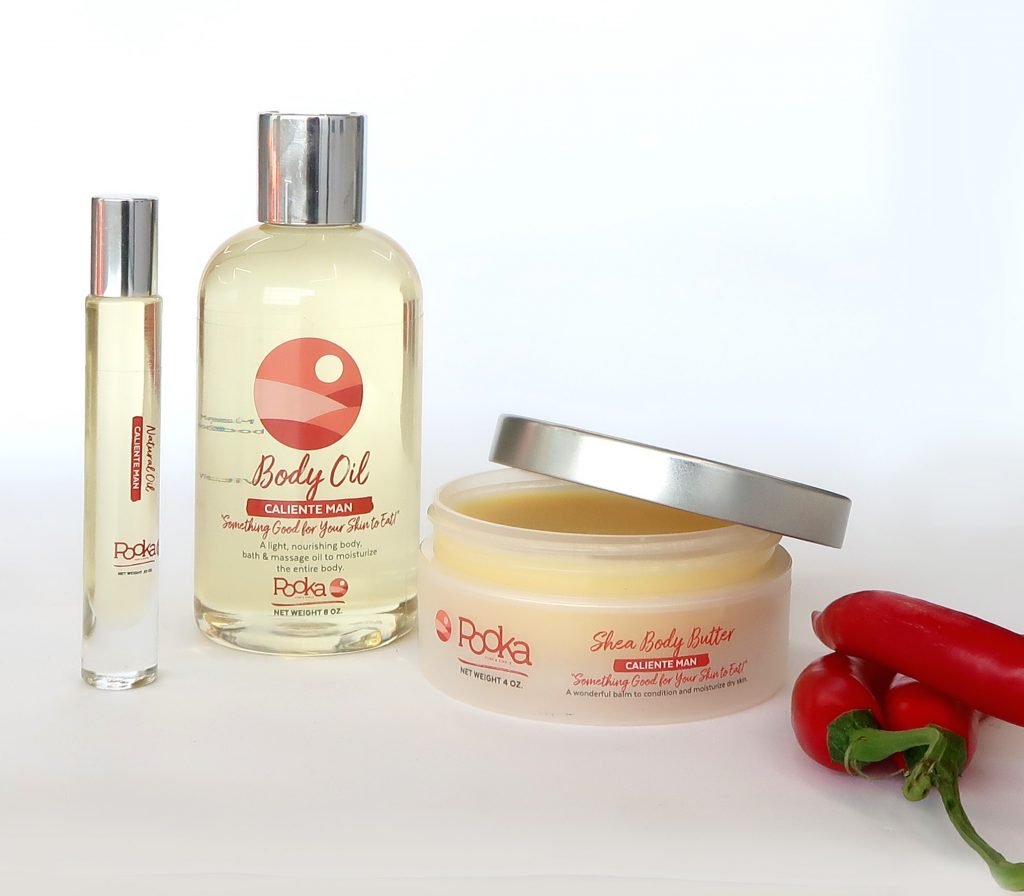
What’s been the distribution strategy?
We had reps at one point like Mary Kay reps. We were trying to do retail, wholesale, selling online, and we had reps doing direct sales. The avenues started competing with each other, and we weren’t putting enough effort to any one thing because we were spreading ourselves thin. Now, we have cut the retail, and we have funneled people to Whole Foods and online. Our main revenue streams are online sales and wholesale distribution.
What do you have to do to be successful at a retailer like Whole Foods?
You still have to do marketing. Some people depend on them to do all the marketing, but I send people to Whole Foods. I have grown my mailing list since I started, and that’s so key. Some people say, “Why do you send them to Whole Foods?” That’s how you keep the brand growing. You have to support them with marketing, and it will come back to you tenfold. It creates demand. Demos are important, too. If you can grab people while you they’re shopping and introduce them to your brand, they will look for your brand the next time they shop.
Is Pooka on Amazon?
No, I’m not. When I really looked at it, I found you have to really dedicate time to it. If you are not going to put the marketing and staffing behind it to make it successful to me, it’s not worth it. I would rather put the focus on growing our website and Whole Foods.
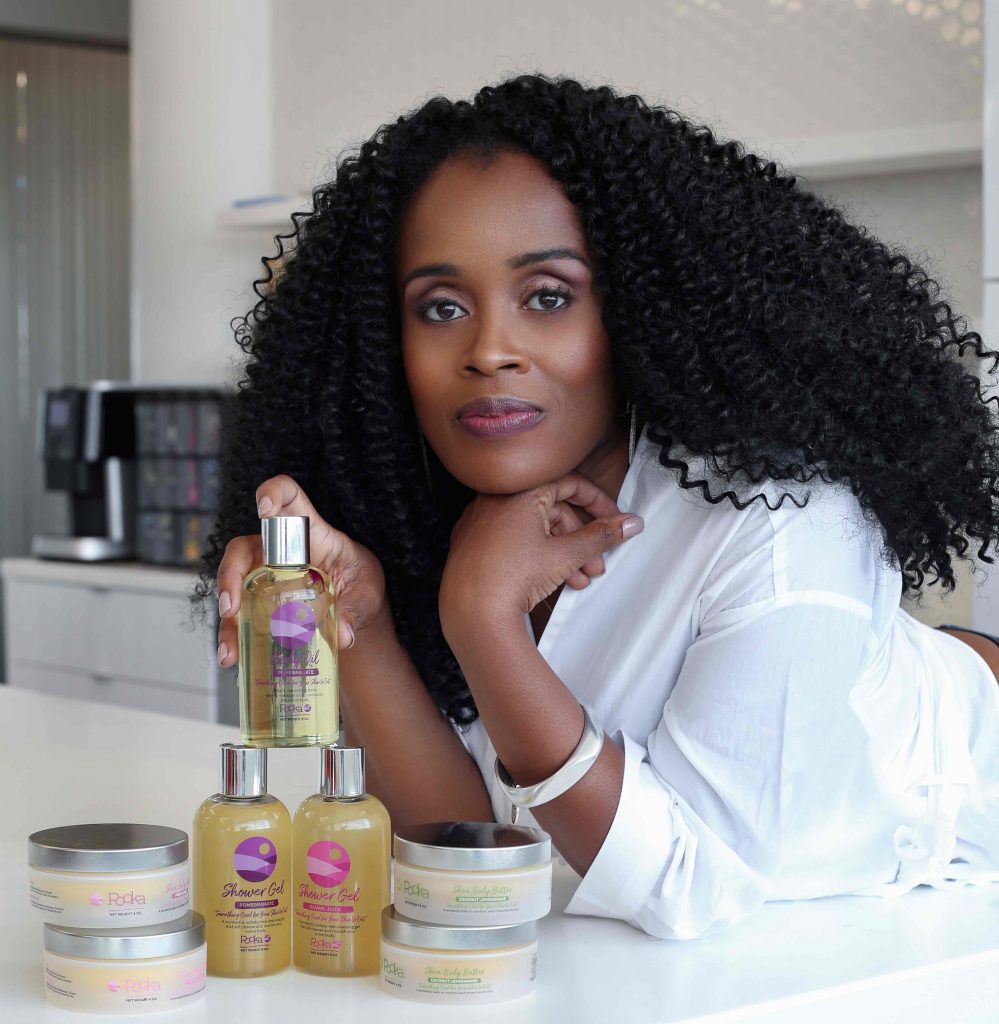
How do you grow the brand’s e-commerce?
We do Facebook ads, and those are very successful. We spend a couple of hundred dollars per month. It’s not a ridiculous, but even $5 to $10 a day makes a difference. You can really drill down on your customer on Facebook. And our social media points to our website. We don’t sell all of our products at Whole Foods and, in the areas where we are in Whole Foods, our website orders are better. People order things we don’t have at Whole Foods. We are working with a web programmer to bolster our website with more content. We want to keep people on the pages as long as possible.
When did Pooka become profitable?
Close to 2012. It took a while. We had some ups and downs, but we’ve been doing a little bit better every year. We think we have hit our stride. We recently rebranded and repackaged. We wanted a more upscale look and changed some of the recipes. We added some more essential oils into the products, and ingredients like ginger and turmeric to make the products more beneficial. You have to refresh your brand. After 17 years, it started getting old. With the rebranding, we started getting more press. People like the holistic, natural ingredients we have added to the products. We started doing a lot more social media, and we have definitely seen growth.
We are looking at getting distribution outside of Whole Foods. At first, we were very limited to certain places. Macy’s wasn’t going to buy $100,000 worth of product that was going to have a shelf life of six months. But, today, there is a wave of retailers that understand natural products. Their minimums are going down, and they understand the shelf life of natural products. I had limited myself to Whole Foods in the past because they really understood natural products. Now, other places do as well.
What’s been your approach to social media?
I started a Facebook group called the Best Life Tribe in 2017. It started out with 20 women, and it’s grown to over 2,500. Every brand now has to figure out what its soul is. People want to know you and understand your brand. People like to know what’s going on behind the scenes. They don’t want to just buy products. With our community, we talk about food, nutrition and diet. Now that we are seeing that people are so engaged, we do journal challenges there, and we talk about meditation. We also talk about beauty, and that’s where we pull Pooka in. We’re really into building a community that gives us a better connection with our customers, and they feel more connected to us. Previously, it was all about products. Now, it’s more about the people, and the engagement is much higher.
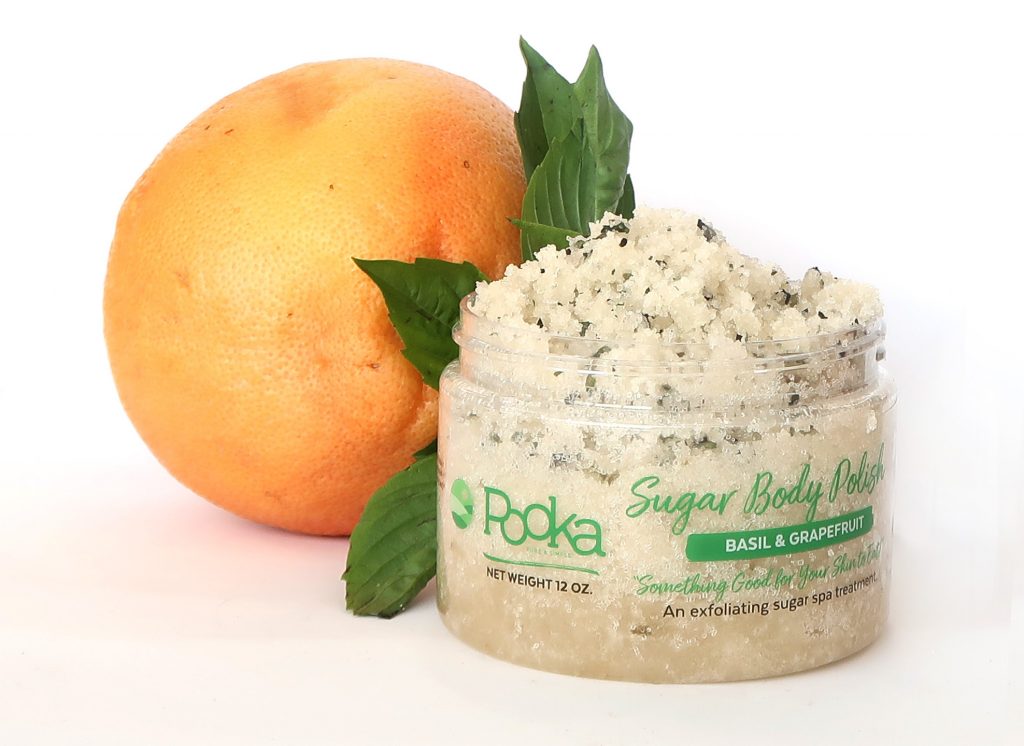
You had a store before, right?
The business was moving along pretty well, and we decided to do retail. We got a really nice retail spot, and we had that for three years. Retail was tough. The place was really nice, but the location wasn’t the best. We closed the store at the end of 2012 and moved to another location because, obviously, we are glutton for punishment. That location was OK, but the parking wasn’t great. After that lease was up, we moved to the place we are now. It’s sort of like a WeWork place, and we have a 1,500-square-foot warehouse. We do workshops where we teach women how to make their own products and start their own businesses.
What was the toughest period at your brand?
I would say from 2013 to 2016. That’s when we moved to our last retail location, and it just wasn’t a good move. When we got in there, the landlord didn’t get the title he was supposed to get. We were there for six months and not allowed to open. We were paying rent at a store that we couldn’t open to the general public. So, the business took a financial hit in 2014. Then, there was scaffolding in front of the building for a year and a half, and people couldn’t park because of the construction. WE signed a nine-year lease, but, thank goodness, it was in three-year increments, and we were able to get out of the lease in three years. I really wanted to give up and close the whole thing down, but I figured I would wait out the three years.
What kept you from shutting down the business?
My passion. I love this business. I love all the people I meet. I was on the cover of Black Enterprise. I got to meet Oprah. Does she know me? No. But I feel like this business is going to grow, and there’s more.
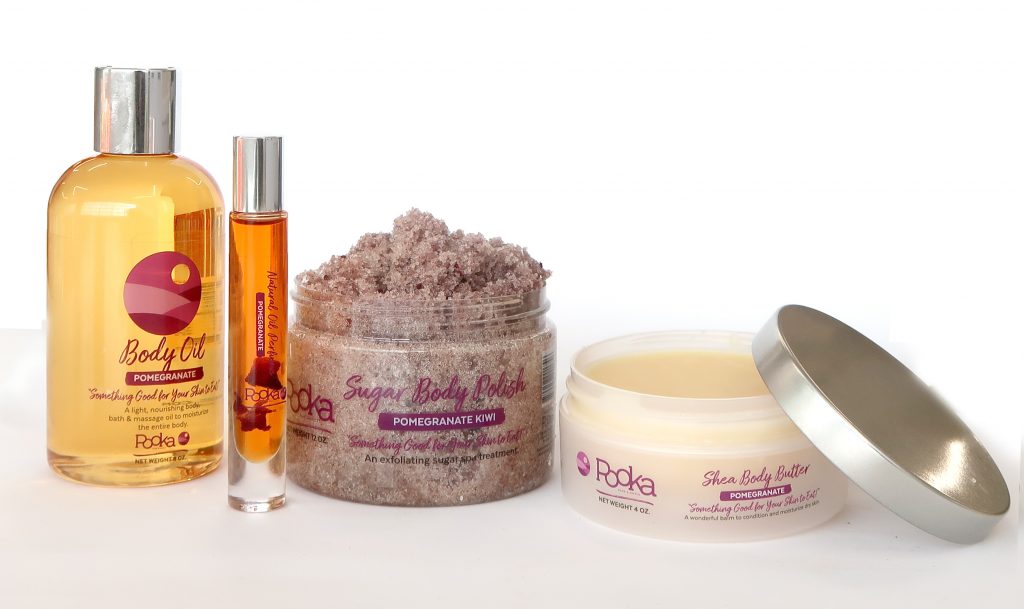
Besides yourself, is there a person or people key to making Pooka work?
My mom pitches in all the time. We found a wonderful manufacturer, Garfield & Russell, that lets us do smaller runs. Finding the right manufacturer was tough because manufacturers want to do large runs – 20,000 of each piece – and we were too small for that. We thought we’d build up the staff and make it ourselves, but that can get overwhelming. This company was referred to me and the owner, James Russell, is a great guy.
Who is Pooka’s target customer?
I’m African-American. So, when people see me, one of the questions I get is, “Are these products for African-Americans?” I respond, “No, they are products for people with skin.” The Whole Foods demographic is multicultural, and we are hitting that market. Pooka is for everyone. Our base right now is 25- to 60-year-old women, mostly African-American, but it’s opening up. We try to get the message out there that these products are for women and men that care about their skin.
What’s the price range and why?
Our lowest priced product is $14.99, and our highest priced product is $22. We wanted to make it affordable for everybody. We are not trying to make a million dollars. These are prices that we can settle on to give people good quality products that we feel good about.
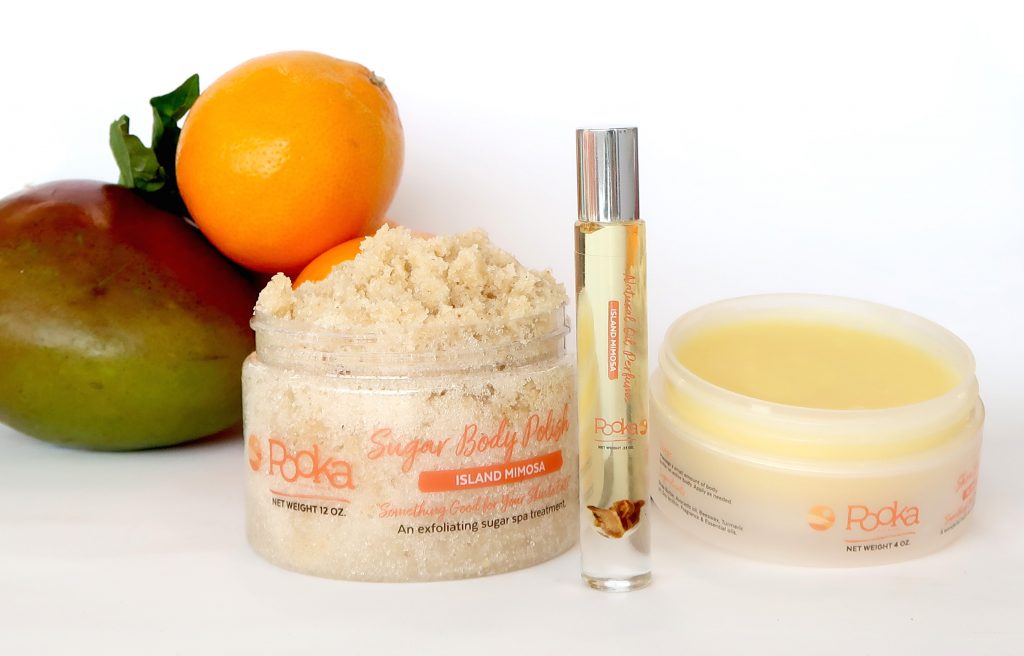
You previously had a store. What has to be done to make a store work?
It’s got to be multipurpose. It’s hard to just depend on retail. If you don’t have a great location and strategy, it can really put you out of business. In the space we are in now, we plan to do no retail. It’s a place where we can ship, pack and have meetings. People kept coming here, so we did put up a little retail area and do workshops. If you want to do retail, I you have to think outside the box, be creative and offer other things. You can get everything online, so it’s hard to be competitive. If you’re opening a place where it’s actually your office as well, it can make sense.
What have you discovered about being a good boss?
I have six people working for me now, and it’s hard because I like to be everyone’s friend. I never want to be the bad guy. I have learned that, if you build a staff of like-minded people that share your values, it’s a lot easier to be a good boss. If you really take the time to get to know people at the beginning and source the right people, it will help you. A lot of times you think you need to hire somebody quickly. Then, later, you might have to let go of them. So, take your time.
How do you take care of your health while running your business?
That can be very stressful. I try not to do too much where I make myself sick. My holistic lifestyle with meditation and acupuncture helps me, and I pray about it a lot. I know that, when my body isn’t feeling well, I need to shut it down. I have a great team I can rely on for days when I can’t be there.

What’s the biggest lesson you’ve learned about what it takes to make it as a beauty entrepreneur?
It takes time. I try to do some mentoring of younger people, and they will say, “I put up a website, and nobody is going to it.” It takes time before people purchase something online that they can’t try, feel and smell. You have to do a lot of grassroots work. It’s not always glossy and pretty. It’s a lot of hard work. The beauty industry is packed. There is room, but you have to persevere. You have to realize it doesn’t happen quickly all the time, so you have to plan to be in it for a while, and you have to love it. If you don’t love it, it will eat you up. If you are in it for money or prestige, it can be hard to last.

